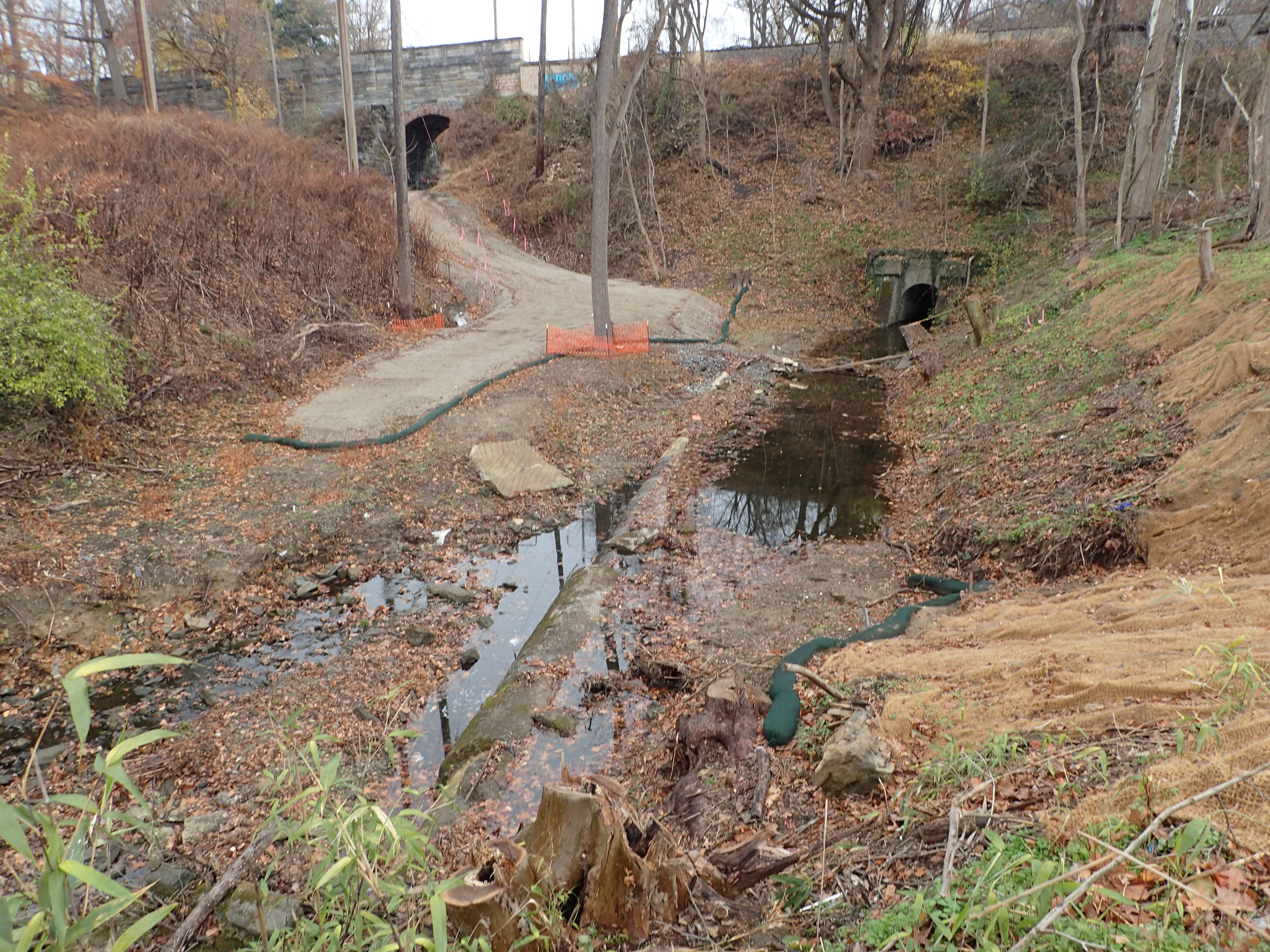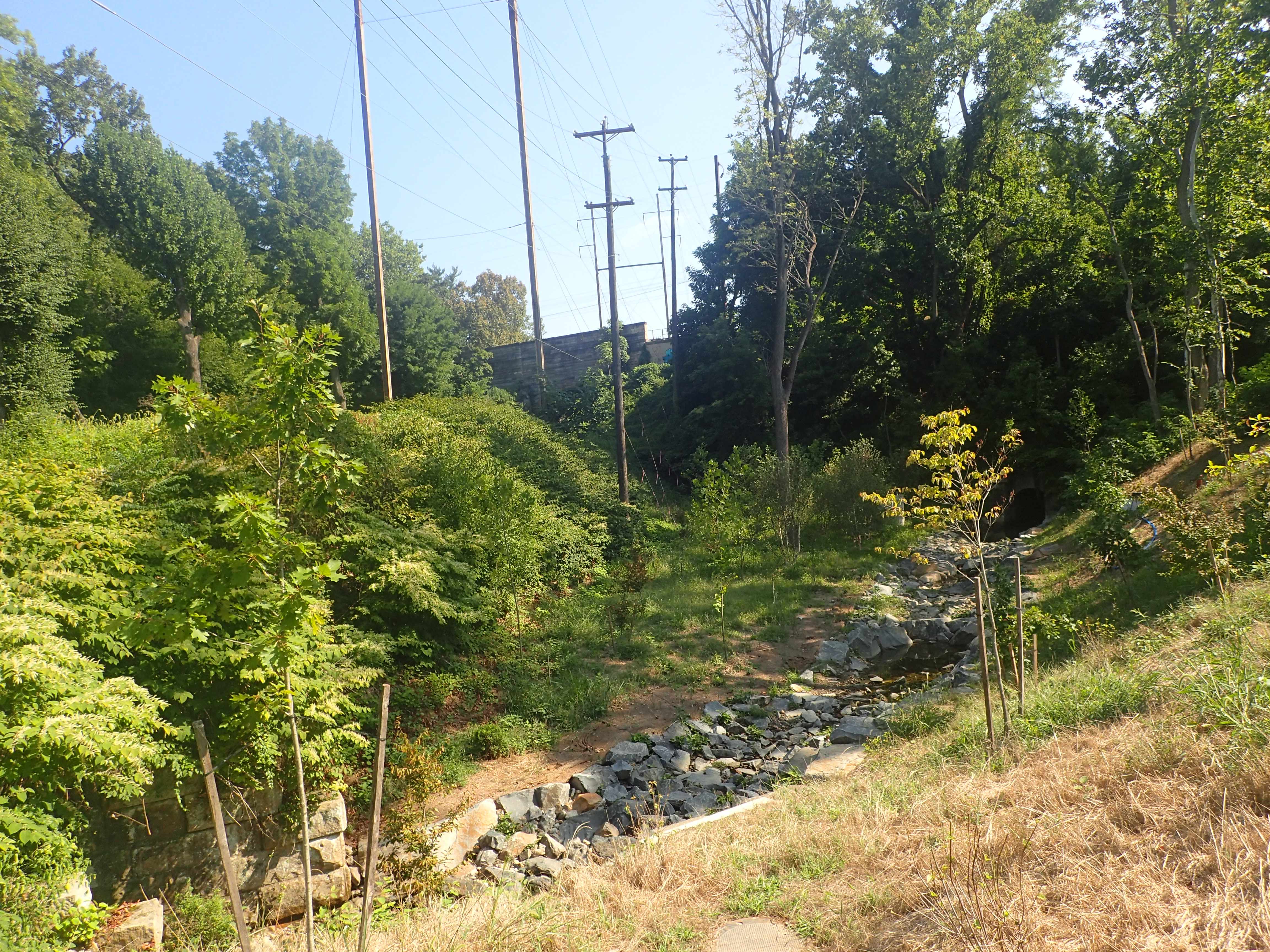Historic development practices have altered natural stream patterns and degraded riparian ecosystems. We are now “working with nature” to implement stream restoration projects that bring back ecosystem functions and protect critical water and sewer infrastructure along the stream corridor.


Vision
Stable Waterways
A stable, functioning waterway is one that has the capacity to convey stormflows without excessive streambank erosion, is connected to an accessible floodplain area, has banks reinforced by native vegetation, channels that provide a diverse aquatic habitat, and drainage areas that promote regular base flow ratios.
Asset Protection
PWD operates and maintains several different infrastructure asset types within the stream corridor. Ecological restoration projects incorporate asset protection and sometimes relocation to improve the viability of both the stream and infrastructure.
Resilient Riparian Habitat
Part of restoring the city’s waterways to a more naturally functioning state is enhancing the riparian buffer, the area of land directly adjacent to the stream. Whether we are planting riparian vegetation, creating wetlands, or reconnecting floodplains, the goal is to provide a safe habitat for wildlife and aquatic life to thrive.
Healthy Streams
Waterways should be free of trash and pollution so communities can enjoy their city’s natural environment. Managing stormwater, restoring streams, reducing the occurrence of CSOs, and educating the public about how they can do their part to protect and enhance these natural assets is critical to achieving healthy waterways.